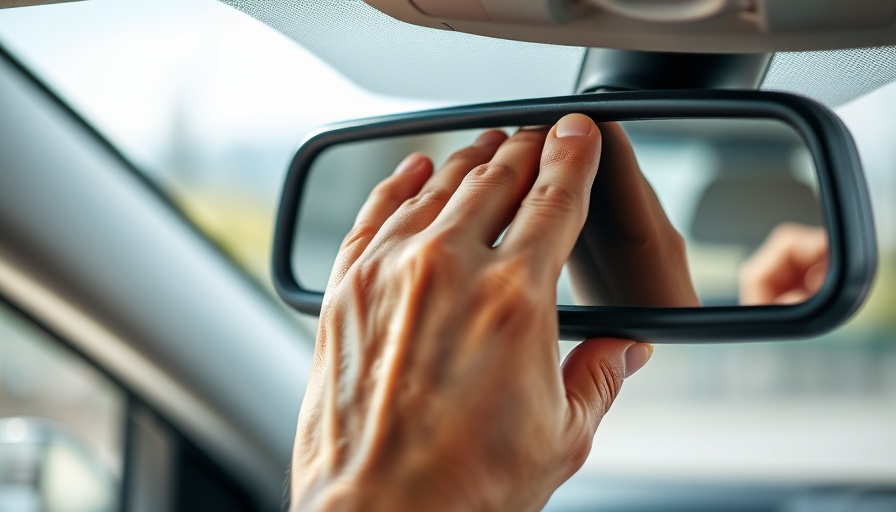
Understanding the Rearview Mirror: Day vs. Night
Many drivers overlook the significance of that little tab on their rearview mirror, but knowing how to use both its day and night settings can greatly enhance your safety on the road. Night driving presents unique challenges, particularly with the bright headlights of oncoming traffic. Using the correct setting can minimize glare and make night drives more comfortable and less stressful.
Why Adjusting Your Mirror Matters
The importance of adjusting your rearview mirror cannot be overstated. Glare from headlights can obstruct your vision, making it difficult to see the road and other vehicles clearly. The day setting offers clarity, while switching to the night mode significantly reduces glare. This adjustment is easy yet essential, ensuring that you're not squinting or straining your eyes as you navigate the roads after dark.
The Mechanics of Manual and Automatic Adjustments
For cars with manual mirrors, the rearview mirror typically features a tab at the bottom. By pushing it down, you activate the night setting, which alters the mirror's angle to deflect bright lights and reduce glare. However, in newer vehicles, rearview mirrors often come equipped with automatic adjustments that use sensors to detect ambient light. This technology shifts the mirror's settings as needed, providing optimal visibility without any manual effort from the driver.
Common Misconceptions About Rearview Mirrors
Despite their simplicity, many drivers are unaware of the full functionality of their rearview mirrors. A common misconception is that the day setting should always be used for clarity, but this is not effective at night. Instead, during night driving, it’s crucial to ensure your mirror is in night mode to minimize glare. Not doing so can lead to dangerous driving conditions that could easily be avoided.
Tips for Ensuring Safe Night Driving
In addition to using the night setting on your rearview mirror, there are several other strategies to improve safety during night driving. Keeping your windshield clean can reduce reflections and improve visibility. Adjusting the angle of your seat can also help maintain a clearer view of the road, allowing you to sit upright and position your mirrors correctly. Moreover, always remember to check your vehicle’s lights and ensure they are functioning optimally before setting off on a night drive.
Taking Responsibility for Your Driving Safety
Ultimately, understanding how to utilize every aspect of your vehicle, including something as seemingly simple as a rearview mirror, can enhance your safety and comfort on the road. Awareness and proactive measures lead to better driving experiences. So the next time you prepare for a night drive, make it a habit to double-check your rearview mirror settings.
Final Thoughts: Embrace Your Knowledge
Armed with the knowledge of how your rearview mirror functions, you can drive with more confidence. Don’t hesitate to share this insight with family and friends; the more informed drivers are, the safer our roads will be.
 Add Row
Add Row  Add
Add 




Write A Comment